User experience
Being a pretty simple analogue device, it’s a pretty simple case of adding your source of choice via one of the three provided inputs, adding your headphone of choice, and powering the PHA on. The green input light ‘A’ illuminates, and you’re immediately presented with an electronic sounding “schhhWOOMP” noise – it’s actually pretty startling if you’re not expecting it. It’s not exactly the most luxurious characteristic from a device of this price, and it also happens when you switch the PHA ‘off’ (followed by a ‘pop’). It seems that this is a result of the capacitors discharging (someone with a better understanding of electrical engineering than me is more than welcome to interject), but this doesn’t happen on most well-designed $99 amplifiers. After a while, you get used to switching the PHA ‘on’ before plugging in your cans, and conversely, unplugging them before switching them off. Less than ideal, but hey – at least it doesn’t take you out of ‘the zone’ from the music you were just enjoying.
Switching sources is as simple as pressing the relevant input button, but I must note that the PHA doesn’t ‘remember’ the last input chosen – it also reverts to input ‘A’ upon start-up. Slightly frustrating, but not exactly a deal-breaker. I did note earlier that the different inputs accept different maximum gain levels – if you’re feeding the PHA from a source device with a proper line-level voltage you may find that clipping will be introduced if you use the 3.5mm jack, which is designed for lower voltage sources. I found this to be the case with the Schiit Bifrost 2, but was easily corrected by using either the XLR or RCA inputs.
The PHA’s analogue volume pot and metal knob is one of the nicest I’ve used, being decently weighted and not prone to accidental shifts in level – it’s both precise (which will become a theme with the PHA), and a pleasure to use. Full marks here.
Being of decent weight and sitting on four rubber feet, the PHA isn’t prone to sliding around on a desktop, nor does it tend to tilt backwards even when fed with chunkier XLR cables in its back panel. All-in-all, it’s a rugged and well-built device (not to mention a handsome one), and it feels more than up to the task of many years of daily use in either a casual listening or studio setting. Sure, it’s small and pretty simple, but it does feel like it has both the design and engineering to warrant its price tag.
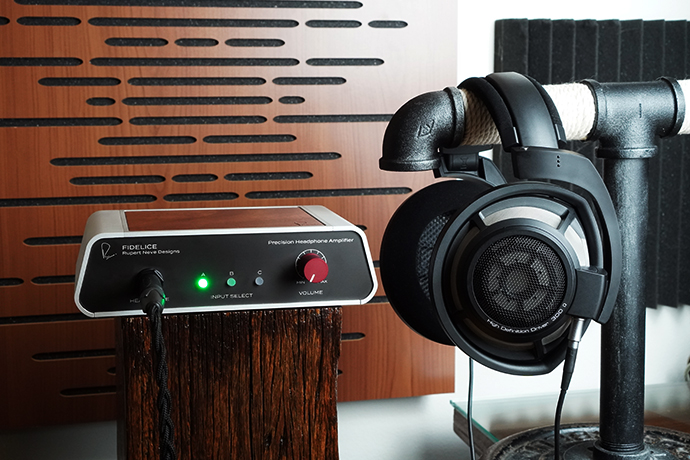
Sound quality and listening experience
The first pair cans I reached for when listening to the PHA was the legendary (if ubiquitous) Sennheiser HD800s. They’re both incredibly revealing of their source gear and also somewhat picky when it comes to amplifier pairings, favouring a less clinical and sterile upstream amp. The Fidelice PHA immediately revealed itself to live up to the ‘Precision’ label on the front panel – it yielded spades of insight and ‘front row’-like clarity with well-recorded live music like Alice In Chain’s brilliant 1996 ‘MTV Unplugged’ record, and yet didn’t do so in a harsh nor ruthless kinda way. This all Class-A design, from input through to output makes for a headphone amp that’s organic, pleasant and utterly lifelike. Voices sound like voices, and instruments – yep – sound like instruments. Don’t for an instance think that this is a warm, syrupy kinda presentation because it’s not. It’s precise, revealing and yet intimate. While the HD800s can make music sound unnaturally diffuse and spacious at times, the PHA tends to focus musical detail back into your ears. I can see that mixing/mastering engineers would appreciate this approach to presenting details, but it also makes for an extremely enjoyable time to just kick back and dig deep into your music library. The HD800s are on the higher side when it comes to impedance, being 300 ohms, and so I expected to have to crank that beautifully-machined red volume knob to get them singing, but no – I couldn’t get it to 9 o’clock on the dial before things got a bit too hectic.
To change things up a bit, I decided to see how the PHA would tango with far more transducers – namely those found in IEMs. I was a little disappointed to find that upon plugging in my Grado GR10’s that there was quite a loud RFI-like electronic noise that simply could be ignored, even when listening to music. This was slightly less present in the harder-to-drive Drop x JVC HA-FWX1, but also mildly present in the rather sensitive yet full-sized Beyerdynamic T70p – a 32-ohm pair of closed-back cans. It did try changing power outlets around my house a few times to rule out ground loops and other interference, but alas, it wasn’t the case. Perhaps an upgraded power supply (or building!) might solve things, but from my experience, I found that the PHA simply wasn’t a usable solution for more sensitive IEMs and headphones.
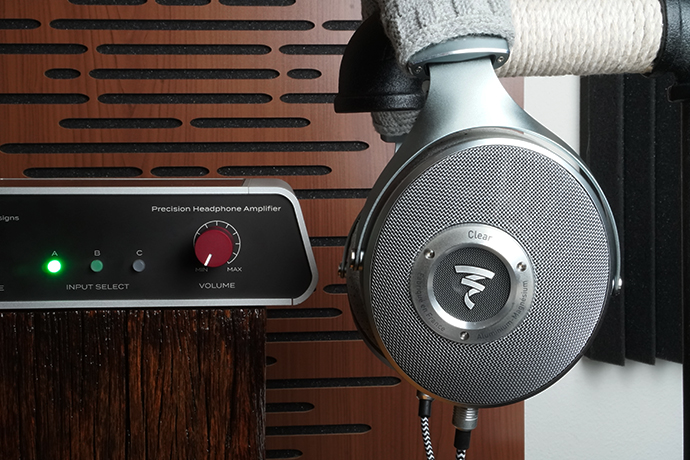
There wasn’t any hint of any background noise, however, in the 55-ohm Focal Clear – what I consider to be perhaps the benchmark for balanced tuning and dynamics. The Clear/PHA pairing eked out a crunching and rollicking rendition of Opeth’s ‘Ghost Reveries’ album, with all the gusto, slam, and nuance that I’ve come to expect from these open-backed French cans, as well as a well-sorted and immersive sense of imaging.
Moving over to another 300-ohm Sennheiser in the form of the HD650, the PHA proved to be an absolute tonal treat. A whirl through Prince’s ‘Diamonds and Pearls’ record gave me the distinct impression that the PHA is an absolute knock-out when it comes to extracting the timbral qualities from high-quality dynamic driver headphones, giving both a colourless and yet organic sense of resonance to your playback experience. It’s real reference-sounding stuff – precise, if you will. The HD650’s oftentimes placid treble department offered plenty of shimmer and sizzle when called for, while placing The Purple One’s voice front-of-stage in an appropriately intimate kinda way.
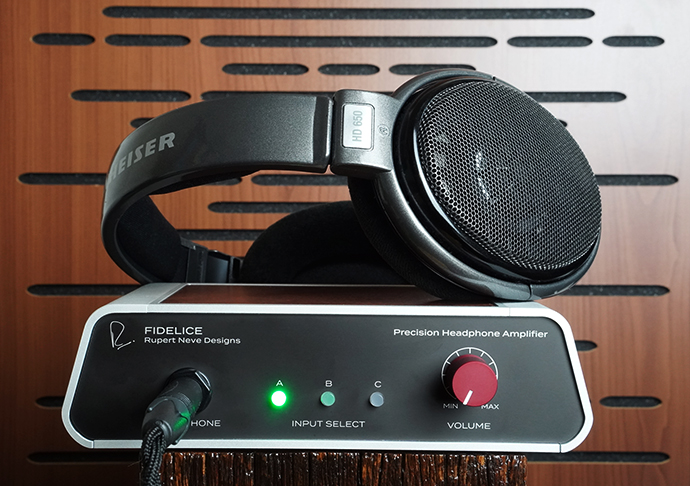
To test the output ability of the PHA a little more it was time to add some planars into the mix. The Dan Clark Audio Aeon 2 Noire, at 92dB efficiency, are the most power-hungry cans I have around the place at the moment, and yet the PHA didn’t break a sweat getting LCD Soundsystem’s ‘Daft Punk Is Playing At My House’ up to ‘house party’ levels. While the PHA only needed to get to 9:30 pm on the volume dial with the Aeon 2 Noire, it wasn’t quite the most authoritative playmate with the Dan Clark Audio planar headphones, providing a little less ‘pep’ and ‘oomph’ than more wattage-friendly options like the Schiit Audio Jotunheim 2.
Switching between the Fidelice PHA and the Jotunheim 2, there were some minor and yet tangible differences between the two in terms of the way they go about playing music. ‘Morph the Cat’, by Donald Fagen, has a more airy and diffuse sound over the (substantially) more powerful Schiit amp, whereas the Rupert Neve brings the focus of front-stage musical elements much closer towards the listener for a more revealing experience. The PHA also adds a more layered approach to proceedings, creating a more distinct separation between the double-tracked vocals in terms of depth, giving Donald Fagen’s brilliantly-produced solo record a more ‘live’ sensation.
Final thoughts
So, how does the studio know-how of Rupert Neve Designs translate into a dedicated desktop headphone situation? Pretty bloody well, as it turns out, provided you’re going to be pairing it with moderately-higher-impedance headphones – ideally of the dynamic variety. It’s precise by name, and precise by nature, without sacrificing any of the emotion and textural information that makes music, well, music. I guess with a product with the ‘Rupert Neve’ name attached to it you are buying into the idea of ‘studio greatness’, and while the Precision Headphone Amplifier’s exemplary tone and detail will get you one foot in the door into the recording studio, it’s the other little touches that help complete the emotional circle and give you a nudge closer towards your favourite artists: the studio-inspired engineering, the old-world design, and of course – the maker’s mark on the front panel.
While the Precision Headphone Amplifier will get your average planars up to foot-tapping levels, it doesn’t convince you that it has the headroom and gusto to tango with the more insensitive Hifimans of the world. On the other end of the scale, it’s not a great match for IEMs and more sensitive headphone. Then again, you’re not likely to find these in your average recording studio. This leads you to the final equation you need to consider with the Rupert Neve Designs Fidelice Precision Headphone Amplifier – the value one. It’s not exactly cheap, and you’re not getting a lot of features nor power for your buck either. There are many cheaper headphone amplifiers on offer that do a lot more for less, on paper anyway. But, this is the type of product that’s for the romantic. The music nerd. You know, the kind of listener that gets a kick from the stories behind the music, as well as the stories behind the gear. If looking at the ‘R’ initial engraved into the mahogany panel of the Precision Headphone Amplifier sound like it might put a bit of a smile on your face while you’re listening to the legendary records made at ‘Sound City’, then it might be the Mid-Century trapezoid that you need to have next to your Eames Chair.





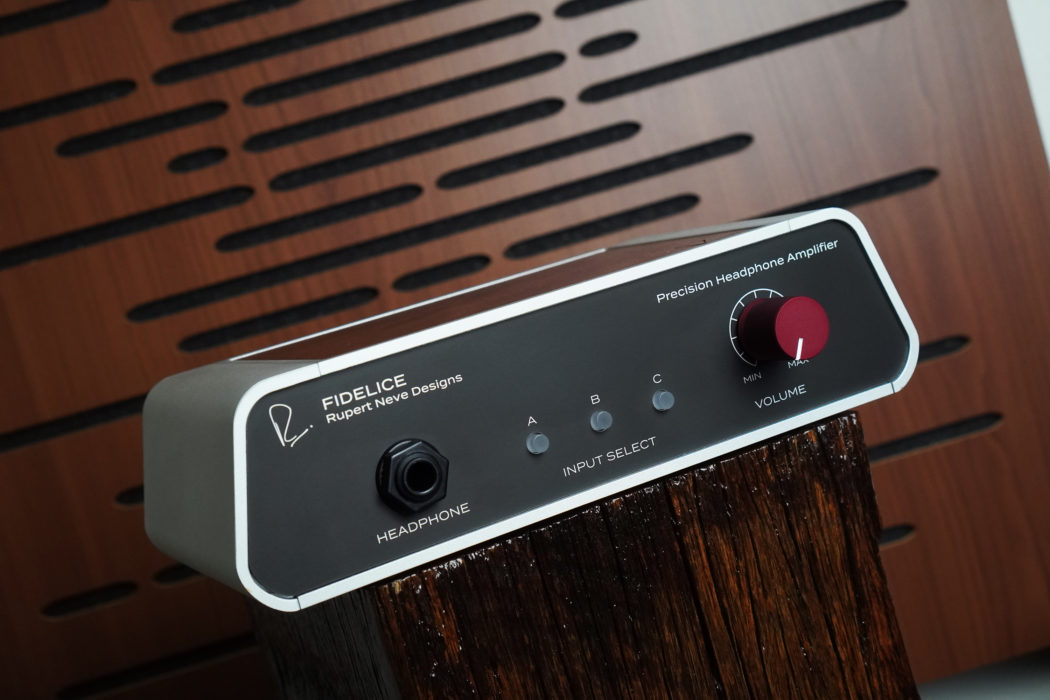
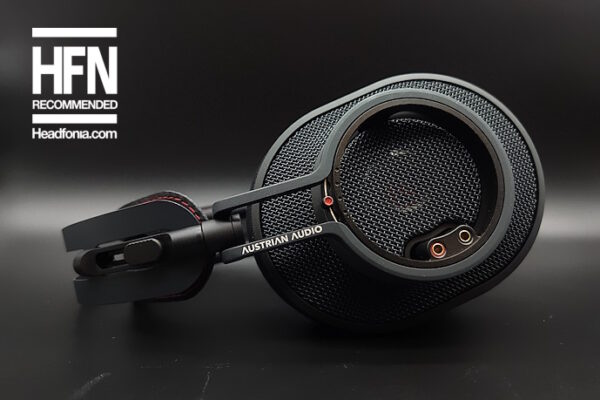

Booker
I actually briefly had one of these earlier this year. Like you, I found it had a noise with low impedance headphones – like a high-pitched whine immediately on connection, regardless of whether music was playing or not, and the dealer accepted a return and refund (after some haggles). I thought it might be AC noise and wondered whether it was our apartment or whether a linear power supply would help, but I didn’t want to have to buy a power supply just to trouble-shoot the issue. From your review it sounds like it’s a common problem 🙁
foubarre
I own the non Fidelice RNHP amp, is there anything better on this Fidelice besides the fancy case?
Matty Graham
They appear to be pretty similar underneath the hood, but I’m not about to do a teardown on it!
Michael Montoya
I am very satisfied with the sound quality of this amplifier. It was easy to set up and it’s a great sounding device for my music collection. I’m able to crank up the volume without any distortion or drop in sound quality, which is always good.
William Kinsman
I believe that it is identical to the RNHP that is about half the price of the Fidelice. I thought that the Fidelice version had balanced outputs, but otherwise the specifications were exactly the same, but this is insane.
rds
reading between the lines this looks like the $699 amplifier with a $500 uncharge. They even appear to be using the same LED and control circuitry. It does look very very nice though.
Pan
They exhibited this amp at AES2019. I was at their booth and asked them what difference there is between this and the RNHP. They pretty much said there is no difference performance wise and only an aesthetic uplift (the dude even said they didn’t touch the circuits at all, and they only increased gain a little bit). Props to them for being frank so I don’t have to shell out one grand for the exact same amp I just bought.
Roman Koschar
I am a big fan of the Pro Audio stuff that Rupert Neve designed. Be it the original Neve consoles (which are now made under the name AMS Neve) or the Rupert Neve Designs stuff. I can attest a special quality to these products that can be distinguished by ear. It is possible to discern the Neve sound.
The trick (at least one of them) is that Rupert Neve uses transformer coupled designs in all of his products which gives them a unique sound signature and accounts for the price which is higher then most other Pro Audio gear.
However as unique as this approach might have become in the Pro Audio field where Number of Channels per $ is king it is still pretty common in HiFi. Every tube amp on the planet uses this design and so do many high priced transistor amps (Like McIntosh for example).
So when RND announced a line of HiFi gear I was sceptical. Not least because there weren’t any reviews. And now that I read the review of the headphone amp I see my suspicions confirmed. RNDs venture on the HiFi market seems to be a marketing ploy and Rupert Neve himself would never have approved of such a strategy or a product line that delivers mediocre performance for the price.